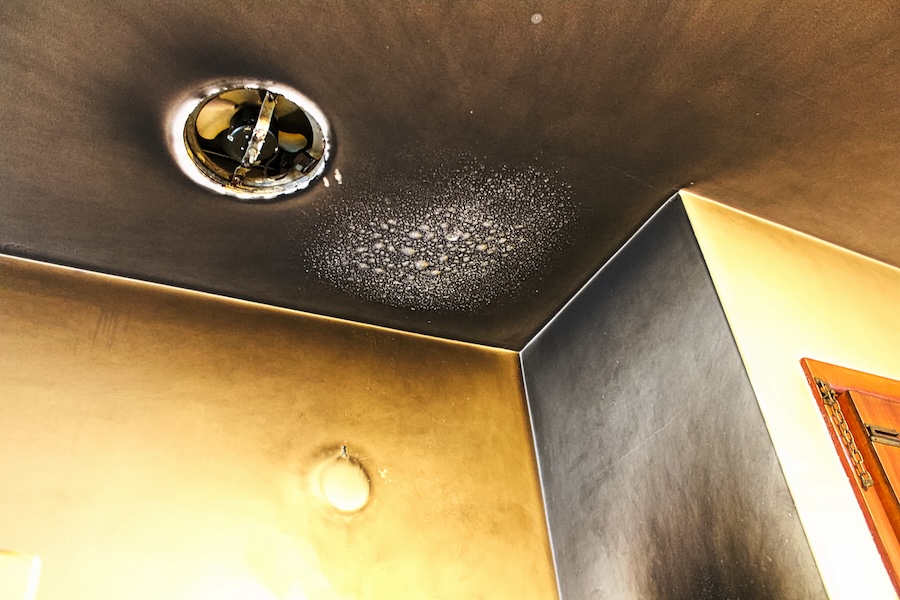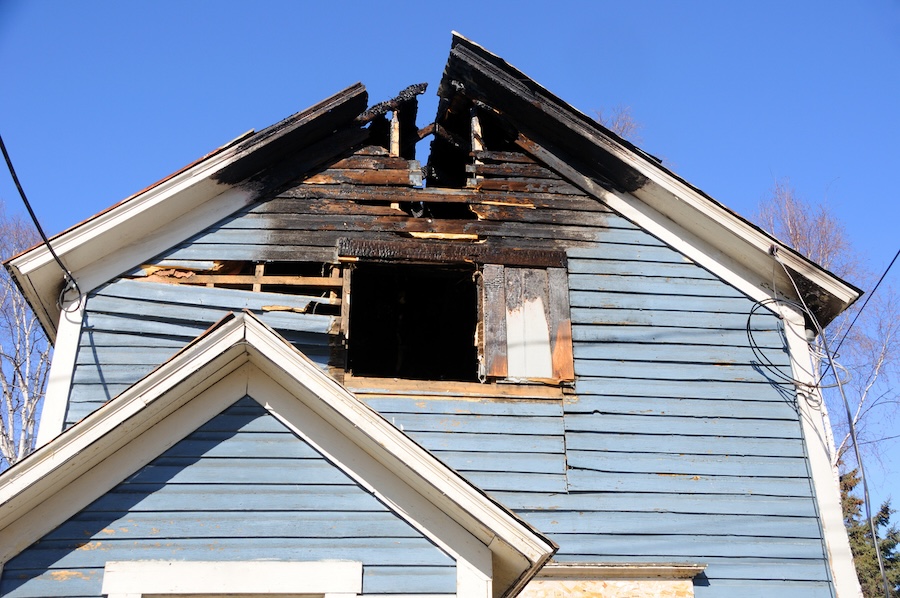Picture this: you return home after a house fire has been extinguished by the fire department, relieved that the flames didn’t spread to your bedroom. But as you step inside, you notice a strange smell lingering in the air, and everything seems covered in a fine, dark residue. Welcome to the world of smoke damage, a hidden consequence that can be just as devastating as the fire itself.
The Quick Answer: Smoke damage refers to the physical damage and contamination caused when smoke particles and soot from fires penetrate and settle on surfaces, materials, and air systems throughout a property. Unlike fire damage, which involves direct burning, smoke damage occurs when toxic chemicals and soot particles travel through air currents, leaving behind smoke residue on everything from hard surfaces to porous materials.
The key difference between fire and smoke damage lies in their reach. While fire damage is typically contained to specific areas, smoke damage can affect rooms far from the original fire source. This happens because smoke particles are incredibly small and lightweight, allowing them to travel through HVAC systems, cracks, and even the smallest openings in your home’s structure.

Types of Smoke Damage and How They Form
Understanding the different types of smoke damage is crucial for proper assessment and restoration. Each type creates unique challenges and requires specific cleaning approaches.
Dry Smoke vs. Wet Smoke Damage
Dry smoke forms during high-temperature fires that burn quickly and completely. These fires consume materials rapidly, creating fine soot particles that are powdery and easier to clean from hard surfaces. However, dry smoke can penetrate deeply into porous materials, making complete removal challenging.
Wet smoke, on the other hand, results from low-temperature, smoldering fires. This type of smoke creates sticky, thick residue that adheres strongly to surfaces. Wet smoke is particularly difficult to remove because it smears easily and can cause permanent stains on many materials.
Wildfire-Related Losses and Smoke Exposure
Wildfire smoke presents unique challenges for homeowners. Unlike house fires, wildfire smoke can travel for miles, affecting properties that never experienced direct fire damage. This type of smoke often contains a complex mixture of burned vegetation, structures, and other materials, creating a cocktail of toxic substances that can infiltrate homes through even the smallest openings.
The impact of wildfire-related losses has grown significantly in recent years, with insurance companies seeing increased claims for smoke damage alone, without any direct fire involvement.

What Smoke Damage Affects in Your Home
Smoke damage doesn’t discriminate, it can affect virtually everything in your home, though some materials are more susceptible than others.
Porous Materials vs. Hard Surfaces
Porous materials act like sponges, absorbing smoke particles and odors deep into their structure. These include:
- Carpets and rugs
- Upholstered furniture
- Drywall and insulation
- Wood furniture and cabinetry
- Clothing and textiles
Hard surfaces like metal surfaces, glass, and sealed countertops are generally easier to clean, though they can still retain smoke residue and require professional attention.
Common Household Items at Risk
Hardwood floors are particularly vulnerable to smoke damage. The smoke can penetrate the wood grain, causing discoloration and persistent smoke smell that’s difficult to eliminate without professional intervention.
Electrical appliances can suffer both visible and internal damage from smoke exposure. Soot particles can infiltrate electronic components, causing malfunctions or complete failure.
Wood furniture often requires specialized cleaning techniques to remove smoke residue without damaging the finish or causing further harm to the material.
Hidden Areas Where Smoke Damage Occurs
Smoke has an uncanny ability to reach areas you might never expect. It travels through:
- HVAC ductwork and vents
- Wall cavities and structural elements
- Attic spaces and basements
- Behind appliances and furniture
The smoke smell can persist in these hidden areas long after visible damage has been addressed, which is why professional assessment is crucial for complete restoration.

Health and Safety Concerns from Smoke Damage
Beyond property damage, smoke exposure poses serious health risks that shouldn’t be ignored.
Toxic Chemical Exposure
Smoke contains numerous toxic chemicals, including carbon monoxide and carbon dioxide, along with other harmful compounds created when synthetic materials burn. These substances can cause both immediate and long-term health problems, particularly for vulnerable populations like children, elderly individuals, and those with respiratory conditions.
When Professional Help is Essential
Attempting to clean significant smoke damage without proper equipment and expertise can actually make the situation worse. Professional restoration teams use personal protective equipment and specialized tools like HEPA filters to safely remove contaminants without spreading them further throughout your home.
Some situations that require immediate professional attention include:
- Extensive soot damage throughout multiple rooms
- Structural smoke penetration into walls and ceilings
- HVAC system contamination
- Irreversible damage to valuable items or surfaces
The cleaning process for smoke damage is complex and requires specific techniques for different materials and contamination levels. Without proper knowledge, DIY attempts can sometimes lead to permanent damage or health risks.
Professional Smoke Damage Restoration and Insurance
When facing smoke damage, understanding the restoration process and working effectively with your insurance company can make a significant difference in your recovery.
The Professional Restoration Process
Professional smoke damage restoration follows a systematic approach designed to address both visible and hidden contamination:
- Assessment and Documentation: Experts evaluate the extent of damage, identifying all affected areas and materials. This crucial step helps determine the most effective cleaning process and provides documentation for insurance claims.
- Containment and Air Filtration: Using HEPA filters and specialized equipment, professionals prevent further spread of soot particles while cleaning the air.
- Cleaning and Deodorization: Different materials require specific cleaning techniques. Porous materials may need deep cleaning or replacement, while hard surfaces can often be restored with proper cleaning services.
Working with Your Insurance Company
Most homeowner’s insurance policies provide reasonable coverage for smoke damage, but navigating insurance claims can be complex. Key considerations include:
- Immediate Documentation: Photograph all damage before beginning any cleanup
- Professional Assessment: Insurance companies often require professional evaluation of smoke damage claims
- Understanding Coverage: Know what your policy covers regarding smoke damage restoration versus replacement
Why Professional Help Matters
Smoke damage restoration isn’t just about cleaning, it’s about ensuring your home is safe and healthy for your family. Professional restoration teams bring expertise in handling toxic substances, preventing cross-contamination, and using specialized equipment that’s not available to consumers.
The restoration process also involves addressing potential water damage that may have occurred during firefighting efforts, creating a comprehensive approach to returning your home to its pre-loss condition.

When You Need Expert Smoke Damage Restoration
Dealing with smoke damage can feel overwhelming, but you don’t have to face it alone. Professional restoration services provide the expertise, equipment, and support needed to restore your home safely and effectively.
RestoPros specializes in comprehensive smoke remediation services, bringing years of experience in fire damage, mold remediation, water damage, storm damage, and smoke damage restoration. Our team understands that every minute counts when dealing with smoke damage, the longer contamination remains, the more difficult and expensive restoration becomes.
Available 24 hours a day, 7 days a week, RestoPros provides immediate response to assess your situation and begin the restoration process. Our systematic approach ensures that all smoke particles and odors are properly addressed, preventing long-term damage and health concerns.
From initial assessment through final cleanup, RestoPros guides you through every step of the restoration process, working directly with insurance companies to ensure you receive the coverage you deserve. Because when smoke damage threatens your home and family’s safety, you need professionals who understand both the science of smoke damage and the urgency of proper restoration.
Don’t let smoke damage compromise your home’s safety and value. Contact RestoPros today for expert smoke damage restoration services that restore not just your property, but your peace of mind.
